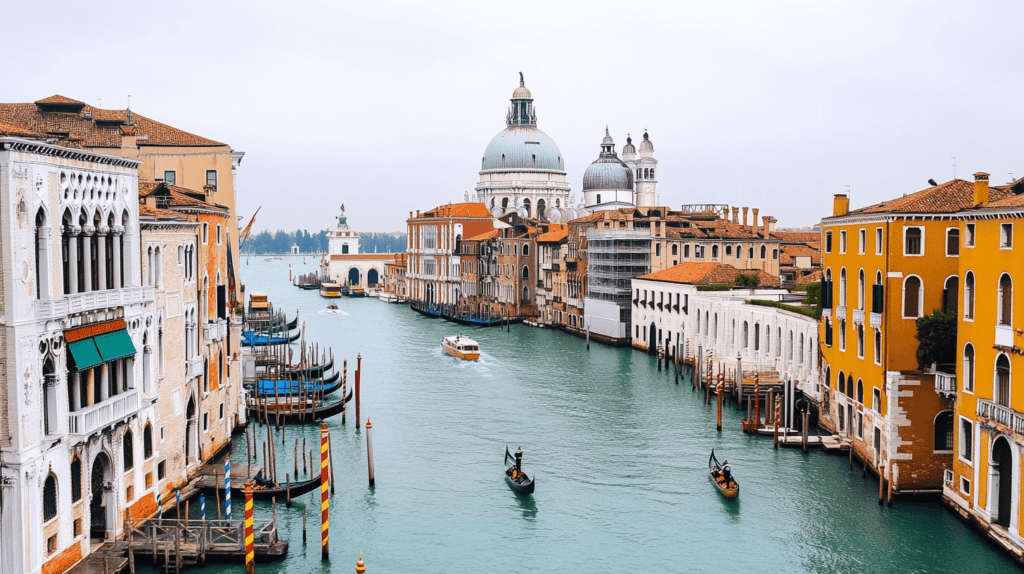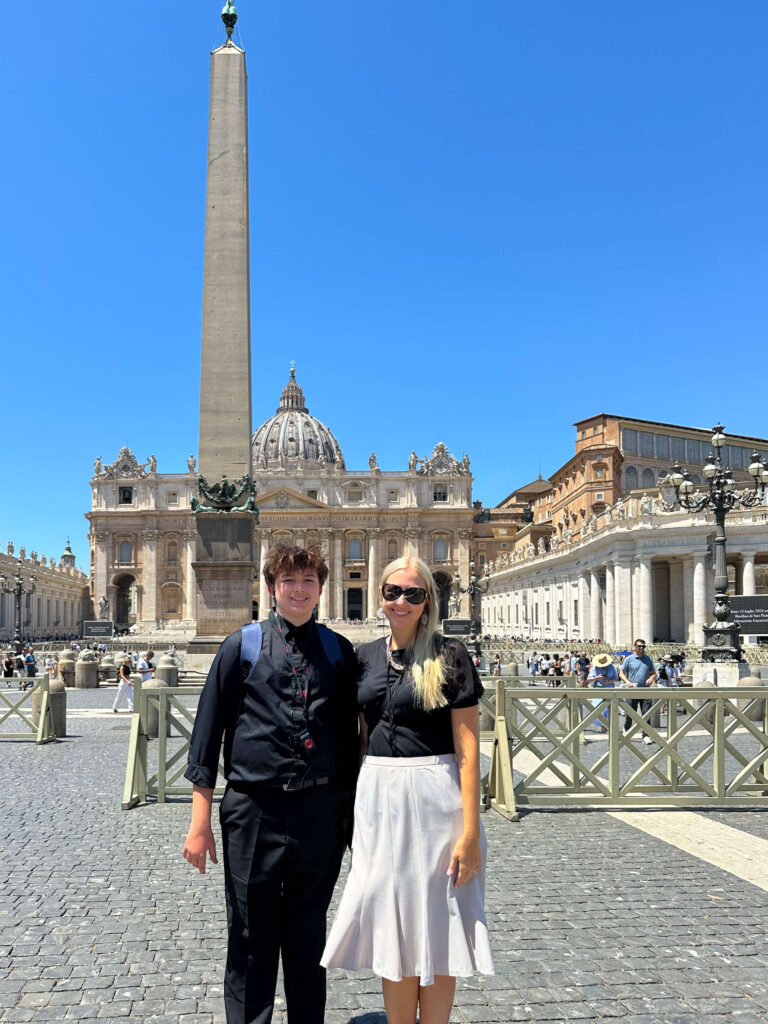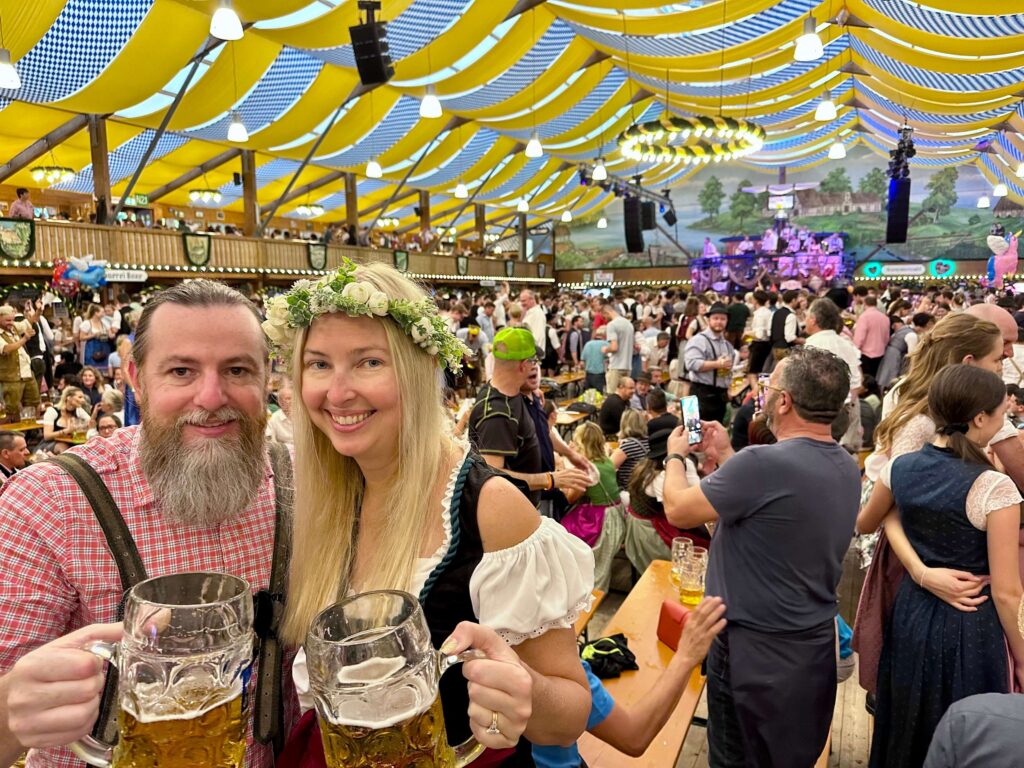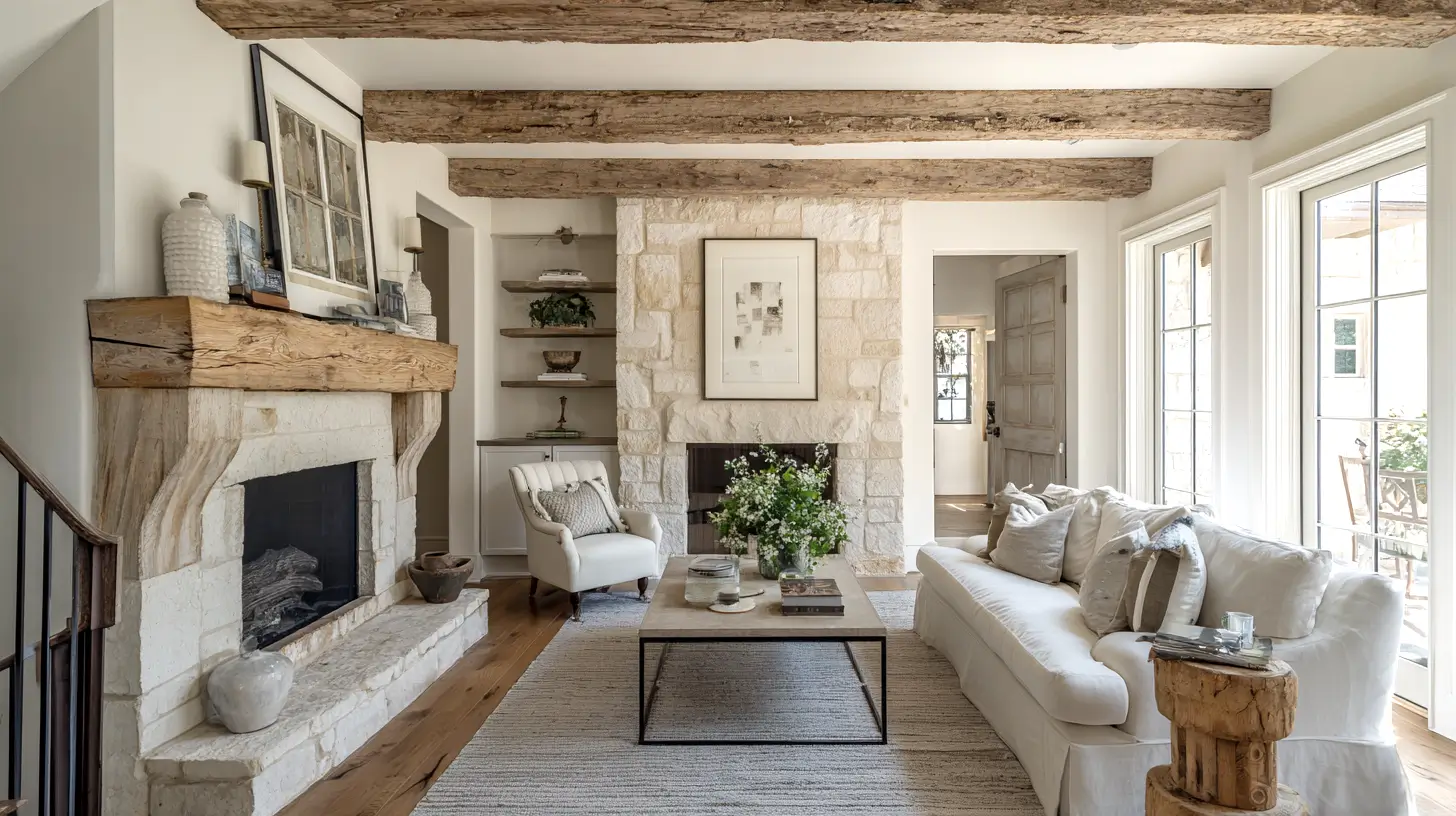Planning a summer Europe trip can feel overwhelming, especially when you’re trying to make the most of every moment without exhausting yourself. Whether you’re traveling solo, with friends, or bringing along the kids, the key is finding the right balance between exploring and relaxing. With so many destinations, how do you even start? Don’t worry—you don’t need to be a seasoned traveler to have a great time. Let’s break down some practical tips to help you make the most of your summer Europe trip.

This site contains affiliate links; please take a look at the disclosure for more information.
Choosing the Right Destinations: Summer Europe Travel
When planning a trip to Europe, one of the first things you need to decide is where to go. Europe is packed with amazing cities, each with its own vibe and charm. But it’s easy to get caught up in trying to see everything, which can leave you more tired than excited.
You can start by thinking about what you and your travel companions enjoy. Are you history buffs, beach lovers, or foodies? Do you want to stroll through ancient ruins, soak up some sun on the Mediterranean coast, or eat your way through Paris? Narrowing down your interests will help you choose destinations that everyone will love.
For example, if you’re looking for a mix of culture and relaxation, consider spending a few days in a bustling city like Barcelona or Rome, then heading to a quieter coastal town or the countryside. This way, you get the best of both worlds—city excitement and some much-needed downtime.
Packing Smart for Summer in Europe
Packing for a summer Europe trip can be tricky because the weather can vary widely from one place to another. In southern Europe, you can expect hot and sunny days, while northern Europe might be cooler and a bit unpredictable.
Keep your packing light and versatile. Stick to breathable fabrics like cotton and linen, which will keep you cool during the day and can be layered in the evening if it gets chilly. A good pair of walking shoes is a must, as you’ll likely be on your feet more than usual. Don’t forget to pack a hat and sunglasses for sun protection, and a light jacket for those cooler nights.
When it comes to toiletries, keep it simple. Most hotels and Airbnb rentals provide basic amenities, and you can always pick up anything you need along the way. Plus, leaving space in your suitcase allows you to bring home a few souvenirs without having to jam your suitcase.
Stylish Women’s 2-Piece Linen Outfit
This summer linen outfit, made of 30% linen and 70% rayon, offers a loose fit with a soft, lightweight feel. The two-piece set includes a sleeveless crop tank top and wide-leg pants with pockets, ideal for summer vacations.
Getting Around: Planes, Trains, and Automobiles
One of the best things about traveling in Europe is how easy it is to get around. The continent is well-connected by trains, buses, and budget airlines, so you have plenty of options depending on your schedule and budget.
Trains are often the most comfortable and scenic way to travel between cities, especially for shorter trips. You can sit back, relax, and enjoy the changing landscapes without the hassle of airport security or long check-in lines. If you’re planning to visit multiple countries, consider getting a Eurail pass, which can save you money and give you more flexibility in your travel plans.
For longer distances, budget airlines like Ryanair and EasyJet offer affordable flights, but be prepared for extra fees for things like checked luggage and seat selection. If you prefer to have more control over your travel schedule, renting a car can be a good option, especially if you’re exploring more rural areas where public transportation might be limited. Keep in mind that driving in a foreign country can be quite a challenge, so it is important to familiarize yourself with the local road rules and driving style.

Where to Stay: Hotels, Airbnb’s, and More
When it comes to accommodations for your summer trip, Europe offers something for every budget and travel style. Whether you prefer the amenities of a hotel, the hominess of an Airbnb, or the social atmosphere of a hostel, you’ll find plenty of options.
Hotels are great if you want a more traditional travel experience, with daily housekeeping, room service, and other conveniences. Many European hotels are small, family-run businesses, especially in smaller towns, so you can often find unique places to stay that reflect the local culture.
Airbnb rentals are perfect for families or groups who need a bit more space or want to save money by cooking some meals at home. Plus, staying in a local neighborhood gives you a more authentic experience, as you can shop at local markets and dine at neighborhood restaurants that might not be in the guidebooks.
For solo travelers or those on a tight budget, hostels are a great option. They’re not just for backpackers anymore—many modern hostels offer private rooms and a variety of amenities, from free breakfast to organized tours and activities. Staying in a hostel can also be a great way to meet other travelers and get insider tips on what to see and do.
Eating Your Way Through Europe
One of the highlights of any summer Europe trip is the food. From Italian gelato to French pastries, Spanish tapas to Greek gyros, there’s no shortage of delicious things to try. But eating out three times a day can quickly add up, so it’s worth finding a balance between dining out and saving money.
In many European countries, lunch is the main meal of the day, with many restaurants offering a set menu at a lower price than dinner. Take advantage of this and make lunch your splurge meal, then opt for something lighter in the evening. Street food is another great option for budget-conscious travelers—you can often find some of the best local flavors at food markets and street vendors.
If you’re staying in an Airbnb or somewhere with a kitchen, consider cooking a few meals yourself. Shopping at local markets is an experience in itself, and you can save a lot by preparing your own breakfast or a picnic lunch to enjoy in a park or by the beach.
Navigating Language Barriers
While English is widely spoken in many European cities, especially in tourist areas, you might still encounter language barriers. Learning basic phrases in the local language can greatly improve your summer trip to Europe.
Even if your pronunciation isn’t perfect, locals will appreciate the effort, and it can lead to more positive interactions. Simple phrases like “please,” “thank you,” “excuse me,” and “where is the bathroom?” can be incredibly helpful. And when all else fails, a friendly smile and some hand gestures can usually get your point across.
Making the Most of Your Time
It’s easy to get caught up in trying to see everything, but sometimes the best moments happen when you slow down and really take in your surroundings. Instead of rushing from one tourist site to the next, give yourself some time to wander, explore, and simply enjoy the experience.
Set aside some time to sit in a café, people-watch, or stroll through a park. These quieter moments can be just as memorable as visiting a famous landmark. Remember, the goal of your summer Europe trip isn’t just to check items off a list—it’s to create lasting memories and enjoy yourself along the way.
One-Month Europe Itinerary: A Balanced Blend of Culture, History, and Relaxation
Spending a month in Europe is a dream come true for many travelers. With four weeks to explore, you can visit multiple countries, immerse yourself in diverse cultures, and still find time to relax and soak in the beauty of each destination. Here’s a well-rounded itinerary that balances the excitement of big cities with the tranquility of smaller towns and natural landscapes.
Week 1: Southern Europe – Spain and Portugal
Days 1-3: Barcelona, Spain
- Must-See Attractions: Start your journey in Barcelona, a city known for its unique architecture, vibrant street life, and stunning beaches. Don’t miss the iconic Sagrada Família, stroll down La Rambla, and explore the Gothic Quarter. Spend an afternoon at Park Güell, and if you’re a fan of art, visit the Picasso Museum.
- Relaxation: Spend your evenings enjoying tapas at local bars and watching the sunset at the beach.
Days 4-7: Lisbon and Sintra, Portugal
- Must-See Attractions: After Barcelona, fly to Lisbon, Portugal’s hilly, coastal capital. Explore the historic neighborhoods of Alfama and Bairro Alto, visit the Tower of Belém, and ride the famous Tram 28.
- Day Trip: Dedicate a day to visiting the fairytale-like town of Sintra, just a short train ride from Lisbon. Explore the colorful Pena Palace and the mysterious Quinta da Regaleira.
- Relaxation: Enjoy a traditional Fado music performance in the evening and try some local delicacies like Pastéis de Nata.

Here’s a picture of my oldest son and myself in Itlay this summer. We visited the Vatican, St. Peter’s Basilica, and the Sistine Chapel that day.
Week 2: Italy—Rome, Florence, and Venice
Spend Days 8-10 in Rome, Italy
- Must-See Attractions: Next, fly to Rome, where history comes alive. Visit the Colosseum, the Roman Forum, and the Pantheon. Spend some time at the Vatican, including St. Peter’s Basilica and the Sistine Chapel.
- Relaxation: Enjoy a leisurely evening walk through the charming Trastevere neighborhood and savor authentic Italian pasta at a local trattoria.
Days 11–13: Florence, Italy
- Must-See Attractions: Take a train to Florence, the cradle of the Renaissance. Visit the Uffizi Gallery, see Michelangelo’s David at the Accademia Gallery, and climb the Duomo for panoramic views of the city.
- Day Trip: Consider a day trip to the Tuscan countryside or the picturesque town of Pisa to see the Leaning Tower.
- Relaxation: Spend your evenings sampling Tuscan wines and enjoying the sunset at Piazzale Michelangelo.
Days 14–15: Venice, Italy
- Must-See Attractions: End your second week in Venice, the city of canals. Explore St. Mark’s Square, visit the Doge’s Palace, and take a gondola ride through the winding waterways.
- Relaxation: Escape the crowds by exploring the quieter neighborhoods of Cannaregio and Dorsoduro. Enjoy a glass of Prosecco by the canal as you watch the sunset.
Week 3: Central Europe: Austria and Switzerland
Days 16–18: Vienna, Austria
- Must-See Attractions: Fly to Vienna, Austria’s elegant capital. Visit the Schönbrunn Palace, explore the Hofburg, and stroll through the beautiful gardens of Belvedere Palace. Don’t miss the chance to see a classical music concert in this city known for its musical heritage.
- Relaxation: Spend some time in one of Vienna’s traditional coffee houses, enjoying a slice of Sachertorte and people-watching.
On Days 19–21: Salzburg and the Austrian Alps
- Must-See Attractions: Take a train to Salzburg, the birthplace of Mozart. Visit the Hohensalzburg Fortress, explore the Mirabell Gardens, and wander through the charming old town.
- Day Trip: Consider a day trip to the nearby Austrian Alps for some hiking or simply to enjoy the stunning mountain views.
- Relaxation: Spend your evenings enjoying the local cuisine and perhaps catching a performance at one of Salzburg’s historic concert halls.
Days 22–23: Lucerne and Interlaken, Switzerland
- Must-See Locations: Experience the beauty of Lucerne, Switzerland, as you explore a city nestled among majestic mountains and serene lakes. Explore the Chapel Bridge and take a boat trip on Lake Lucerne. Then, head to Interlaken, known for its outdoor activities and stunning scenery.
- Relaxation: Enjoy the natural beauty of the Swiss Alps with a day of easy hiking or simply take in the views from a mountain cable car.

My husband and I were in Munich for Oktoberfest last year.
Week 4: Northern Europe: Germany, Netherlands, and Belgium
Days 24-26: Munich, Germany
- Must-See Attractions: Start your final week in Munich, the heart of Bavaria. Visit Marienplatz, tour the Nymphenburg Palace, and explore the English Garden. If you’re interested in history, the Dachau Concentration Camp Memorial Site is a short train ride away.
- Relaxation: Spend an evening at a traditional beer garden, enjoying local brews and hearty Bavarian food.
On Days 27–29: Amsterdam, Netherlands
- Must-See Attractions: Fly or take a train to Amsterdam, where you can explore the Anne Frank House, the Van Gogh Museum, and take a canal cruise through the historic city center.
- Relaxation: Rent a bike and ride through the Vondelpark, or take a day trip to the nearby Zaanse Schans to see windmills and traditional Dutch villages.
Days 30-31: Brussels and Bruges, Belgium
- Must-See Attractions: End your month-long journey in Belgium. Spend a day in Brussels, visiting the Grand Place, Atomium, and enjoying some famous Belgian chocolate. Then, take a short trip to Bruges, a medieval city known for its canals, cobblestone streets, and historic buildings.
- Relaxation: Enjoy a leisurely boat ride on the canals of Bruges and wind down your trip with some Belgian waffles and beer.
This one-month Europe itinerary offers a balanced mix of major cities, cultural experiences, and time to relax and unwind. By planning ahead and staying flexible, you can make the most of your summer Europe trip, creating memories that will last a lifetime.
Final Thoughts on Your Summer Europe Trip
Planning a summer Europe trip doesn’t have to be complicated. You can make a trip that is both fun and rewarding by focusing on what you like, packing lightly, and making sure you have time to relax and see the sights. Keep things simple, stay flexible, and remember that the best adventures are often the ones you didn’t plan for. Whether you’re exploring a new city, trying local foods, or just soaking up the culture, your summer Europe trip is sure to be an experience you’ll never forget.




